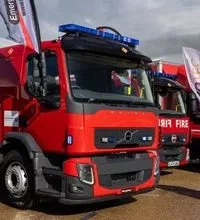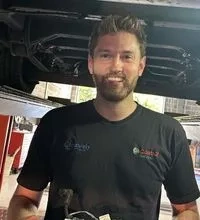How Sytner Group provides the perfect training

In this article: Whether your business is big or small, sales or technician focused, Sytner Group’s head of learning and development, Sue Sansome, gives advice for providing the best training
Sytner has a diverse workforce, so how do you make sure all staff are receiving the correct training and at the right time?
At the on-boarding stage, we have introduced new systems to identify the appropriate e-Learning and training pathways. Job role specific and internally designed Sytner e-Learning is released to new starters during their first days via an automated process. Managers are responsible for ensuring it’s completed and we achieve a success rate of over 95% within 90 days of release.
Also, as part of on-boarding and 1-2-1 discussions with line managers, local HR Managers or regional coaches, training courses are identified and booked via our Learning and Development Support team. We have development pathways and training for all roles, some mandatory, some developmental.
As part of inductions and regular probation reviews with line managers, all colleagues have time to discuss their training needs. Mentors and buddies also support initial training and this is especially vital for apprentices. Quality one to one time is spent creating a training plan for the mandatory courses, while also discussing other personal development opportunities.
How much emphasis should be placed on individuals taking positive steps towards training?
We believe it is important for everyone, early on, to recognise that their own development is important. In the last few years we have really changed our focus on this. It was such a big driver we designed a new Sytner 1-2-1 review platform. Reviews are now driven by the colleague not the manager. The 1-2-1 review templates introduced are no longer to simply discuss performance but also welfare, career aspirations, training, development and any personal support required to achieve those goals.
With so many learning options, how can companies decide what is useful and what’s not?
Any training starts with the end in mind. What do you want individuals or teams to do differently as a result? Training Needs Analysis can help identify gaps in learning and development portfolios, but more important, is working and consulting with the sharp end of the business to understanding what skills and experience need developing.
Sytner is a large group, so is there a balance between internal and external training?
Over the past five years at Sytner, we have moved more and more to internal training. This enables us, to provide exactly what our colleagues and managers need. This training is then supported by regional Coaches to ensure the learning is embedded.
We do still utilise manufacturer academy training, particularly in the areas of technical and apprenticeships and why wouldn’t we use that vast array of expertise?
What tips do you have for those wanting to keep staff trained and their skills up to date?
Managers play the most important part in my view. Everyone needs to feel supported and encouraged to be the best they can be. Communication is key, as is understanding your team and what drives them. Ensure you have a varied and engaging portfolio of events but ensure that is supported back in the workplace with reviews and on the job training. Finally, never stand still. The automotive retail industry is ever changing. Managers and learning and development professionals must embrace this and constantly be looking for ways to offer development and engagement and to support people become the best they can be.
Find out more about how the IMI could help you deliver training to your staff, head to the institute’s learning and development resources at https://www.theimi.org.uk/learning-and-development
This is an edited extract from IMI's new MotorPro magazine, received free as part of IMI membership. Find out more about becoming a member of the most influential community in UK automotive.




